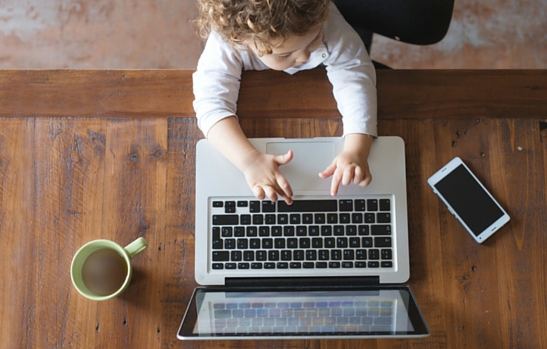The easiest way to get up and running on any computer is to just start using it, a lot. MacBooks, in particular, are extremely user friendly and once you’ve gotten used to OS X, you can quickly get up to speed on pretty much any machine. Still, if you’re not familiar with Macs or you it’s new to you,it can be a daunting task. Follow these steps to get started.
1. Start the setup process.
When you turn on your MacBook for the first time, the Setup Assistant will lead you through start-up process, which includes selecting your country, creating an account (or multiple accounts if you’ll be sharing the computer), connecting to a local Wi-Fi network, and choosing your privacy settings.
2. Enter your Apple ID.
The Setup Assistant will prompt you to enter your Apple ID while you’re logging on for the first time. This is the login and account that’s associated with your iTunes account, if you have one. This will allow you to re-download apps and music that you’ve previously purchased without paying for them again.
If you skip this step during setup, you can enter it later by clicking on “System Preferences” and then “iCloud.” You’ll need to enter a credit card for the initial setup, but you can later change your preferred payment method to “none” if you don’t want a card linked to the account.
3. Beef up your security.
As data and information become increasingly valuable to criminals, it’s more important than ever for computer users to take precautions to protect themselves. Start by setting your MacBook to require a password once a screen saver kicks in, especially if you plan on using your MacBook often in public places.
Then, download apps only from the Mac store or other trusted Web sites, and turn on FireVault Disc Encryption, an option in Apple’s newer operating systems that will automatically encrypt everything on your hard drive. Speaking of operating systems, make sure that you’ve always got the latest one (see #5) to ensure you’ve got any security fixes rolled out by Apple.
4. Migrate files from your old computer.
In the past, one of the most frustrating parts of setting up a new computer has always been migrating music, documents, and data from your old machine to the new one. While it’s still a somewhat cumbersome process, it’s gotten much smoother. Make sure both computers are connected to the same network (such as your home Wi-Fi network), and then use the Migration Assistant tool in the Utilities folder on your MacBook, which will walk you through the process.
Alternatively, if you use iCloud or a cloud storage service like DropBox, you may be able to simply upload relevant files from the old computer to the cloud and then download them as needed.
5. Check for OS X update.
It’s important to keep your software up to date, both because it will keep your computer more secure and because newer apps and programs may not run as well on older operating systems. Even brand new MacBooks may not have the very latest software. To make sure you have the latest version, open the App Store and click on the “Updates” icon on the tool bar. This will allow you to update both your operating system and any apps with new releases. Then restart the computer and check to see if there are any other updates, because some won’t become available until others have already been installed.
Following these the steps will get you on the right path to mastering your new MacBook. Looking for more? Check out these 10 MacBook shortcuts to become a productivity powerhouse.

